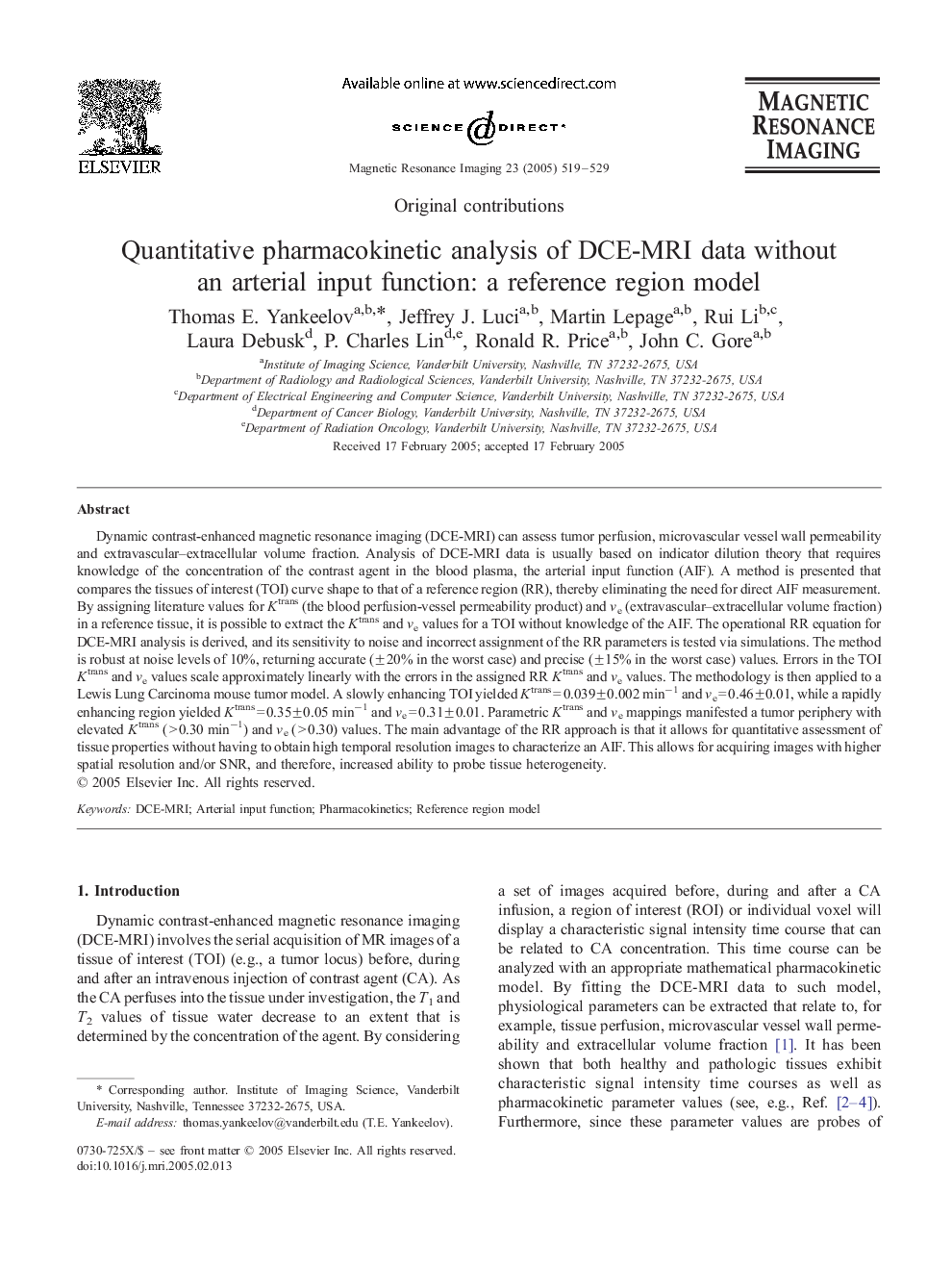| Article ID | Journal | Published Year | Pages | File Type |
|---|---|---|---|---|
| 10712871 | Magnetic Resonance Imaging | 2005 | 11 Pages |
Abstract
Dynamic contrast-enhanced magnetic resonance imaging (DCE-MRI) can assess tumor perfusion, microvascular vessel wall permeability and extravascular-extracellular volume fraction. Analysis of DCE-MRI data is usually based on indicator dilution theory that requires knowledge of the concentration of the contrast agent in the blood plasma, the arterial input function (AIF). A method is presented that compares the tissues of interest (TOI) curve shape to that of a reference region (RR), thereby eliminating the need for direct AIF measurement. By assigning literature values for Ktrans (the blood perfusion-vessel permeability product) and ve (extravascular-extracellular volume fraction) in a reference tissue, it is possible to extract the Ktrans and ve values for a TOI without knowledge of the AIF. The operational RR equation for DCE-MRI analysis is derived, and its sensitivity to noise and incorrect assignment of the RR parameters is tested via simulations. The method is robust at noise levels of 10%, returning accurate (±20% in the worst case) and precise (±15% in the worst case) values. Errors in the TOI Ktrans and ve values scale approximately linearly with the errors in the assigned RR Ktrans and ve values. The methodology is then applied to a Lewis Lung Carcinoma mouse tumor model. A slowly enhancing TOI yielded Ktrans=0.039±0.002 minâ1 and ve=0.46±0.01, while a rapidly enhancing region yielded Ktrans=0.35±0.05 minâ1 and ve=0.31±0.01. Parametric Ktrans and ve mappings manifested a tumor periphery with elevated Ktrans (>0.30 minâ1) and ve (>0.30) values. The main advantage of the RR approach is that it allows for quantitative assessment of tissue properties without having to obtain high temporal resolution images to characterize an AIF. This allows for acquiring images with higher spatial resolution and/or SNR, and therefore, increased ability to probe tissue heterogeneity.
Related Topics
Physical Sciences and Engineering
Physics and Astronomy
Condensed Matter Physics
Authors
Thomas E. Yankeelov, Jeffrey J. Luci, Martin Lepage, Rui Li, Laura Debusk, P. Charles Lin, Ronald R. Price, John C. Gore,
